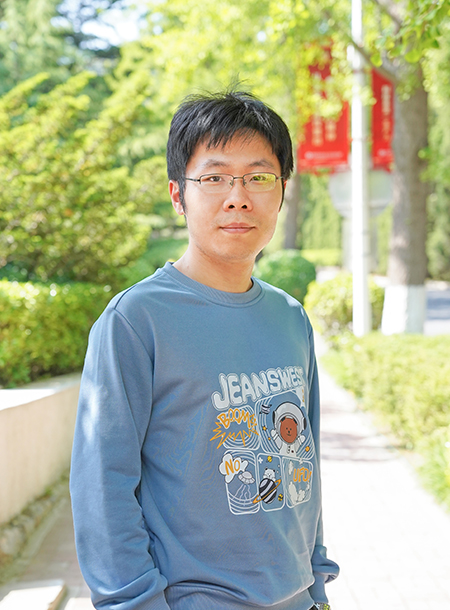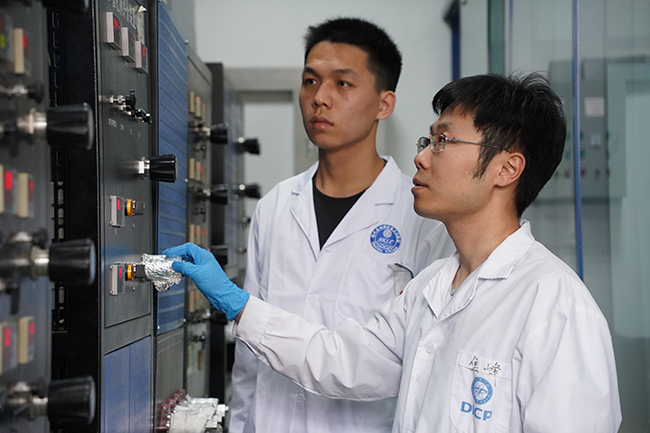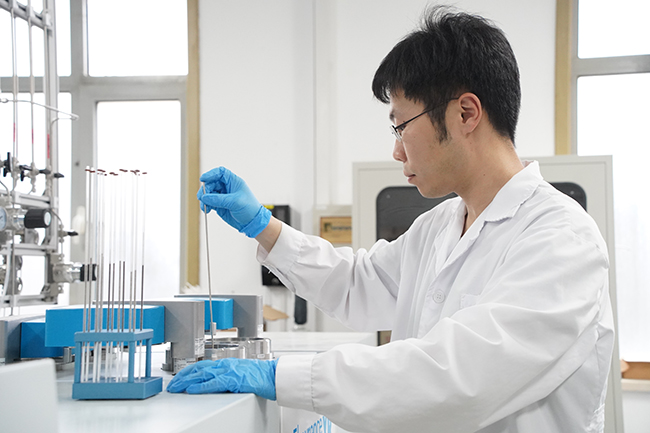
The Fischer-Tropsch Synthesis (FTS) process, a well-known and established catalytic chemical process, produces liquid hydrocarbon fuels from syngas, which is a mixture of hydrogen and carbon monoxide. This process has been industrialized into a mature chemical industry over the past 100 years. However, preciously controlling the target products selectivity remains challenging via FTS.
Many researchers are attempting to pave the way for the conversion of syngas into value-added chemicals and fuels. JIAO Feng, an Associate Professor from the Dalian Institute of Chemical Physics (DICP) of the Chinese Academy of Sciences, is one of the researchers at the forefront of this study.
This young 32-year-old researcher has dedicated himself to research for 10 years. "I joined a DICP summer program in my junior year at the University of Science and Technology of China," said JIAO, "And that was the start of my scientific research career."
The summer program ignited the research enthusiasm of JIAO, and he was recommended for admission to the DICP after receiving his bachelor's degree. He joined Prof. BAO Xinhe and Prof. PAN Xiulian's group to pursue his Ph.D..
"My doctoral study was to develop an unconventional catalyst system, by abandoning traditional FTS concept, and overcome the light olefins selectivity bottleneck of FTS process," said JIAO.

JIAO Feng and his coworker (Image by LIANG Xiao)
Light olefins, including ethylene, propylene, and butylene, are important raw chemicals to produce plastics, detergents, rubbers, and adhesives which are widely used in our daily supplies. It has been commercially produced from petroleum via cracking or coal-derived syngas via an indirect route. Although light olefins could also be produced directly from syngas using the FTS process, their selectivity requires to be greatly improved.
Prof. BAO and Prof. Pan have led their team to explore the direct conversion of syngas to light olefins since 2008. After years of efforts on improving FTS catalysts, the team gradually realized that the product selectivity can hardly be fundamentally improved due to the FTS mechanism.
"Under the supervisor of BAO and PAN, I learned that only to abandon the traditional FTS process from its mechanism could we make a breakthrough," said JIAO.

JIAO Feng in the laboratory (Image by LIANG Xiao)
BAO and PAN's team developed a nanocomposite bifunctional catalyst that could directly catalyze syngas into light olefins. This bifunctional catalyst including metal oxide and zeolites (or zeotypes), just as its name implies Oxide-Zeolite (OXZEO), could achieve high selectivity towards light olefins (80% among hydrocarbons) at a carbon monoxide (CO) conversion of 17%. The C2-C4 hydrocarbons selectivity reaches 94%, which is far beyond the theoretical limit of the classical FTS process, which is predicted not to exceed 58% according to a well-known Anderson-Schulz-Flory distribution model.
This work was published in Science in 2016, and JIAO was the first author.
"I completed my doctorate in 2018 and stayed in BAO and PAN's team to continue the research in the field of direct syngas conversion," said JIAO.
JIAO's latest research findings were published as a research article entitled "Disentangling the activity-selectivity tradeoff in catalytic conversion of syngas to light olefins" in Science in May 2023. JIAO is the first author of this study.
"In 2016, we have demonstrated the superiority of OXZEO concept in preciously controlling the light olefins selectivity direct from syngas. However, the activity in that study still needed to be greatly improved," said JIAO.
Activity and selectivity are the two key indexes of a successful catalyst in chemical reactions. Higher activity indicates higher efficiency in converting feedstock to products, thereby reducing energy consumption. Selectivity reflects the percentage of desired products that determines the economy of the technology. However, achieving high activity and selectivity simultaneously during syngas conversion reaction is challenging.
"It is just like a 'seesaw' with activity and selectivity sitting on the two sides of it," said JIAO. "Over the past six years, we have systematically studied the underlying mechanism of OXZEO catalysis and we have been trying to figure out the key to solve this 'seesaw' effect."
The team has demonstrated the importance of disentangling the desired target reaction from the undesired secondary reactions for syngas-to-light olefins. Incorporating the germanium-substituted aluminomphosphates under the framework of the OXZEO concept provides one representative solution. Using this catalyst, researchers were able to simultaneously achieve a high CO conversion rate and high olefins selectivity for the reaction of syngas to light olefins under optimized conditions.
"As a traditional and mature chemical industry field, the remaining challenges in syngas chemistry are typically 'hard nut' to crack. I knew it is difficult, but 'new blood' is also required in this mature field," said JIAO. "As application-oriented fundamental research, I will try to contribute my effort to make this OXZEO concept into industry application, although there is still a long way to go."